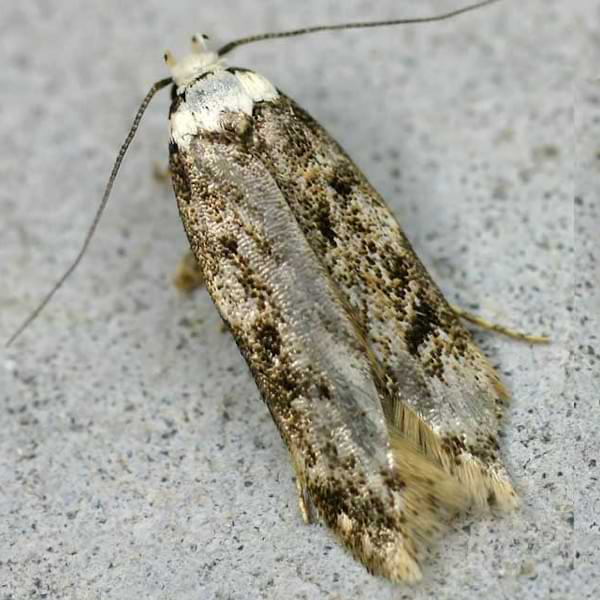Moth
Pest Control

There are several species of moth that are generally referred to as clothes or carpet moths:
- The adult Common Clothes Moth (Tineola bisselliella) is 6 to 7mm long with pale, plain golden-buff wings fringed with hair.
- The rarer Case-Bearing Clothes Moth (Tinaea pellionella), is duller and has three dark brown spots on each of its wings.
- The Brown House Moth (Hofmannophila pseudospretella) is very common, larvae feeding on fur, feathers etc.
- The White Shouldered House Moth (Endrosis sarcitrella) is found in birds nests, grain stores and feed mills.
These moths are all quite small, 6-20mm long and characterised by folding their wings tent-wise along their backs. Clothes moth adults do not feed so they cause no damage to fabrics. However, the adults produce eggs which hatch into the fabric-eating larvae that look like small whitish maggots or caterpillars.
Features
Clothes moths are seldom seen because they avoid light. They prefer dark, undisturbed areas such as cupboards, under furniture and lofts and tend to live in corners or in folds of fabric. They will hide very quickly if disturbed. They are definitely not the moths you see attracted to lights!
Adult insects deposit their eggs in all sorts of locations; clothing, upholstery, rugs, toys, animal skins, trophies, and even natural bristle brushes. As the eggs hatch, the larvae will look for any clothing and natural fibres to feed on. Materials such as woven fabrics, fur, wool, feather products, silk leather and dog and cat hair.
The moths prefer dirty materials and are especially attracted to carpeting and clothing that contains sweat or other liquids that have been spilled onto them. They are attracted to these areas not for the food but for the moisture imparted to the fabric; the clothes moth caterpillars do not drink water; consequently their food must contain moisture.
Why Moths Need Controlling
Clothes moths do not pose a significant health risk, but their larvae can cause serious damage to clothes, fabrics and carpets. Each female clothes moth can lay up to 160 eggs over a 2 week period. The larvae will continue causing damage as they feed over several weeks.
Signs To Look For
- Damage to carpets and clothes
Perhaps the first sign of a moth infestation will be bare patches in carpets, particularly under furniture which is not normally moved or cleaned under. You may also find holes in clothes, usually those that haven't been moved for a long time, left at the back of wardrobes and drawers. - Adult moths
Small moths scurrying around, often at lower levels. They generally prefer crawling to flying. - Larvae
Small maggot like caterpillars in clothes and carpets, usually in dark places. - Silken tubes or cases
The larvae produce silk webbing feeding tunnels and moult regularly leaving behind the cases. - Frass
The faecal pellets left by the larvae. These look like small grains of sand and will often be the same colour as the material consumed.
Methods Of Control
There are several steps that can be taken to help prevent a moth problem in the first instance and reduce numbers if their presence is suspected.
- Keep wardrobes and clothing areas well aired. Rotating stored clothes can disturb and deter the moths.
- Regular inspections of clothing and carpets should be done, looking for holes, larvae, etc.
- Frequent use of a vacuum cleaner, in wardrobes, storage cupboards and on carpets, can also help to reduce population numbers.
- Clothes, fabrics and linens, that are not in regular use, should be stored in a sealed plastic bags or suitcases.
An established moth infestation may require professional treatment using specialist insecticides.
